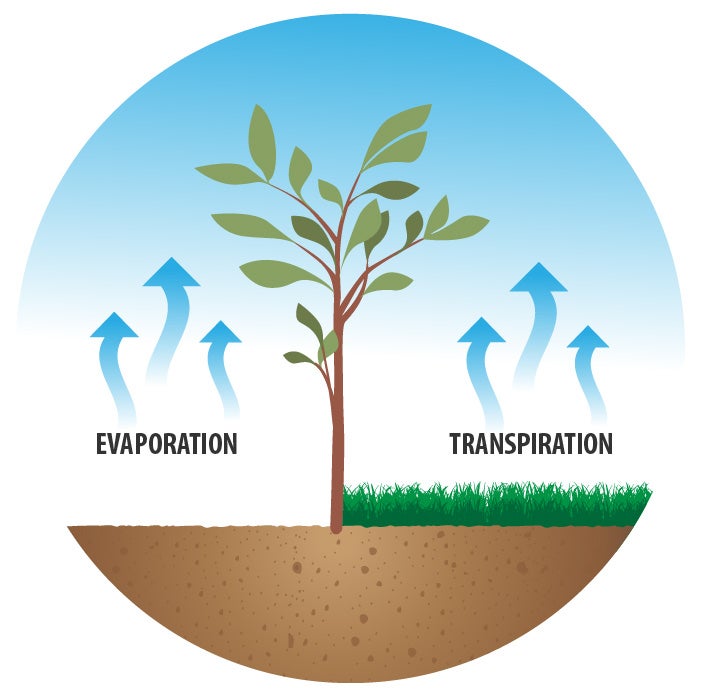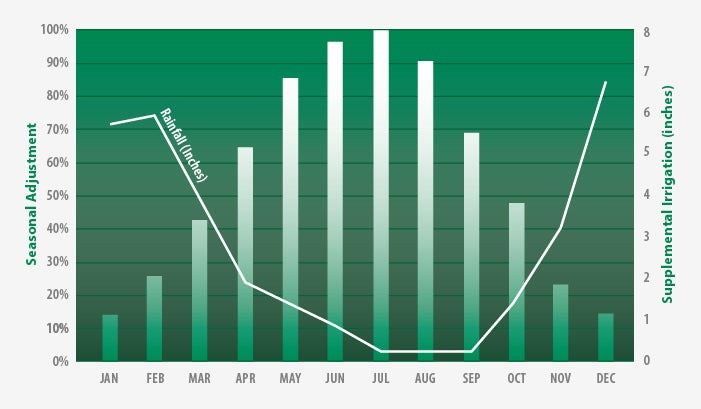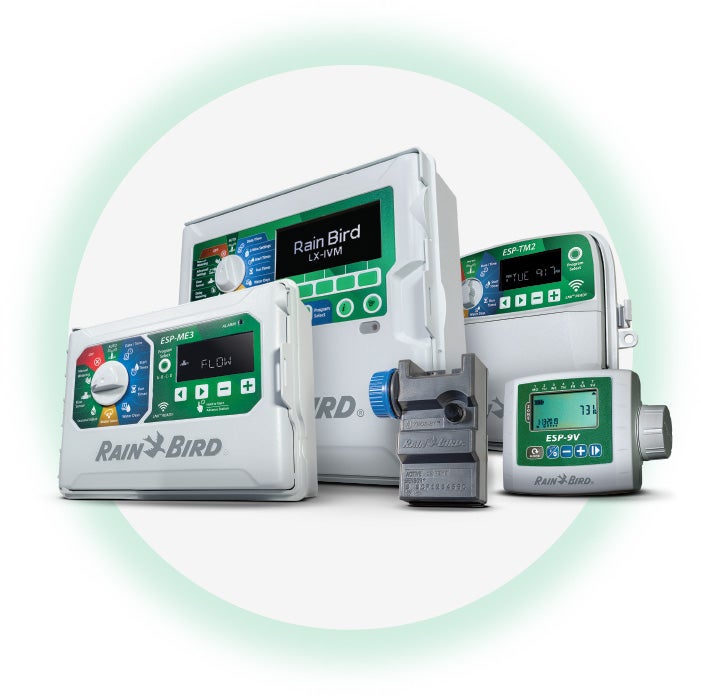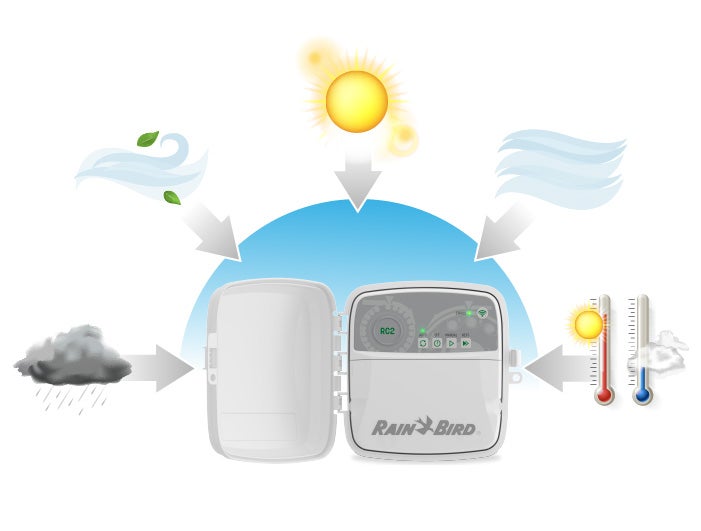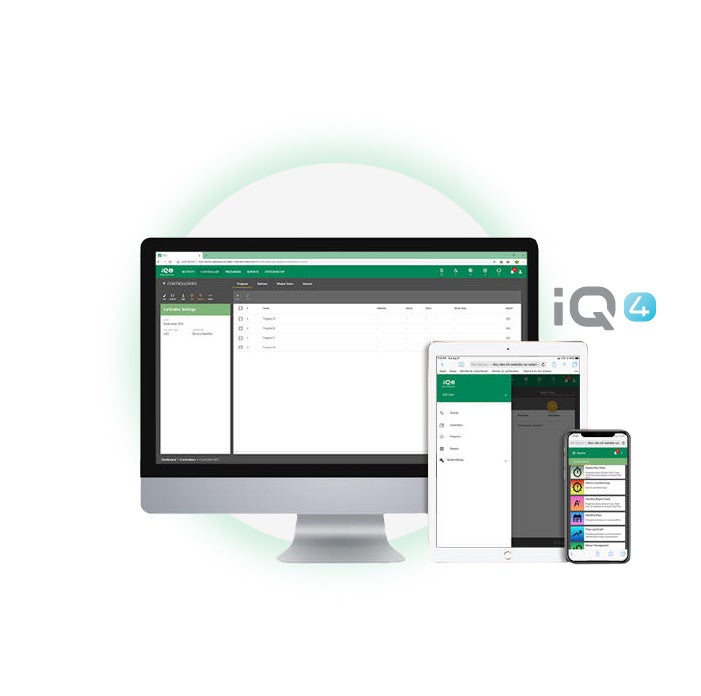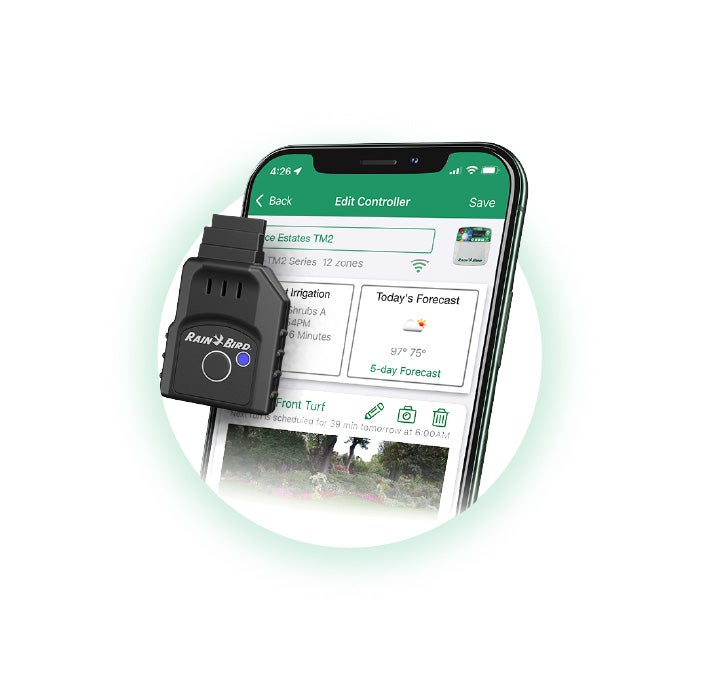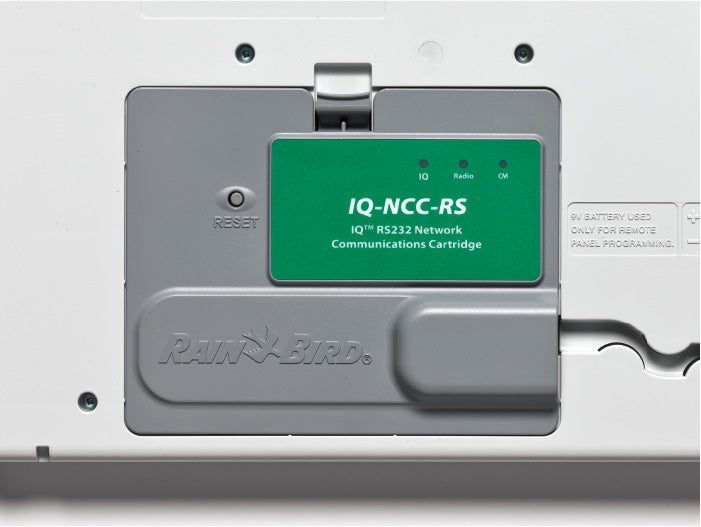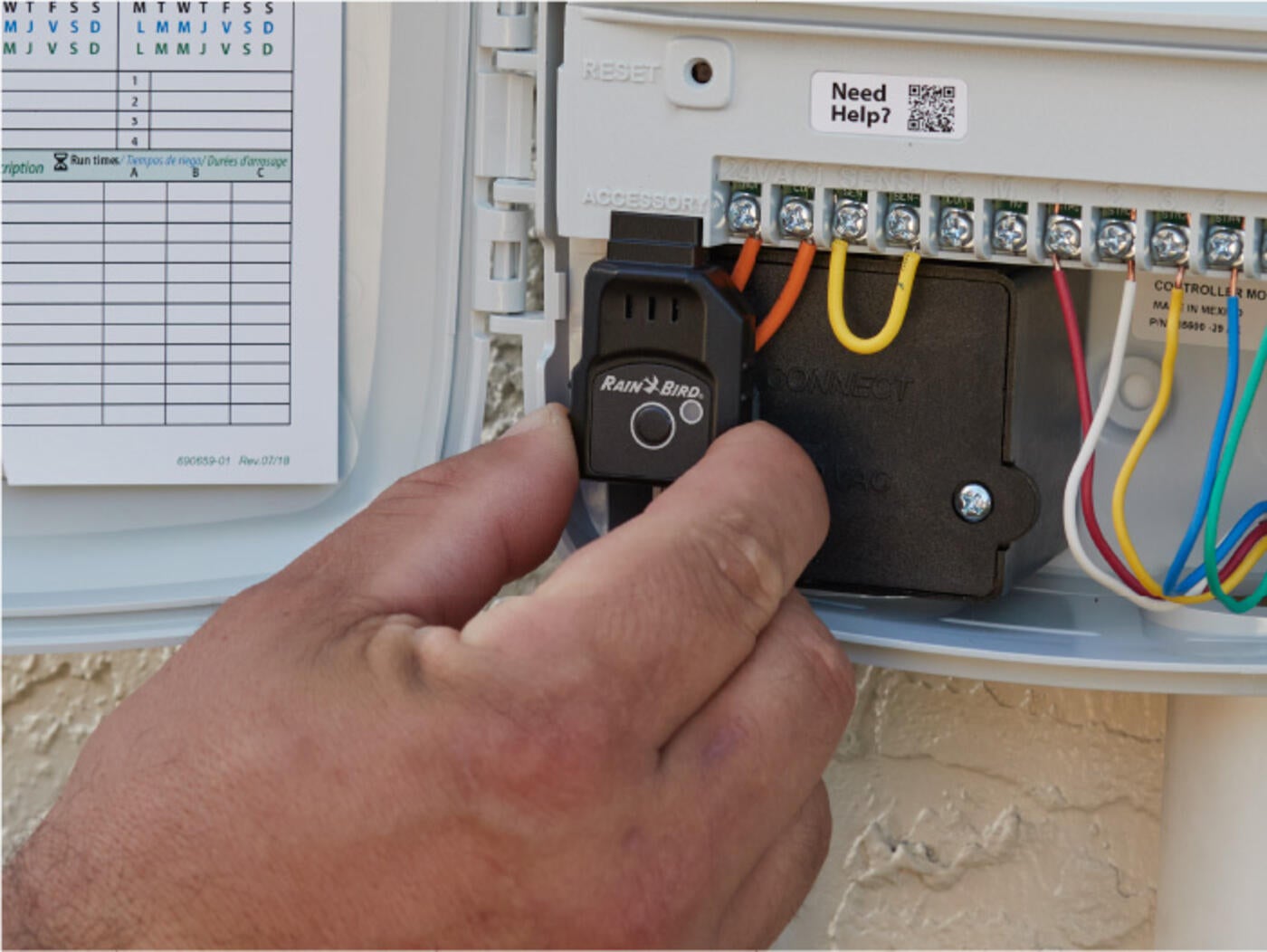
WEATHER-BASED IRRIGATION
The Key to Sustainability
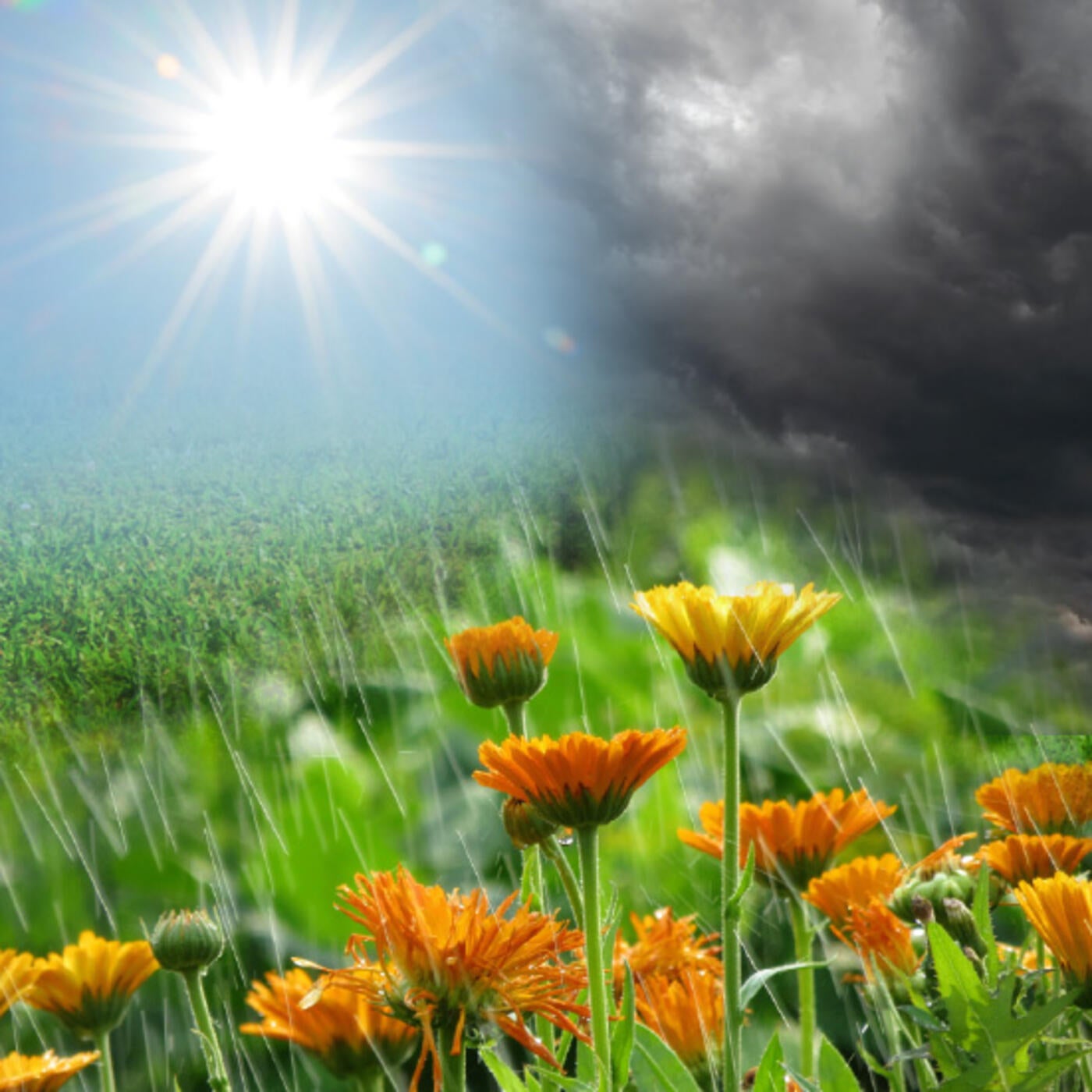
WEATHER-BASED IRRIGATION
The Key to Sustainability
Sustainable vs. Unsustainable Irrigation Practices
Irrigation makes it possible to keep trees and plants healthy, even in extreme drought conditions. Unsustainable irrigation practices, however, can cause erosion and pollute or deplete natural water sources. The key to minimizing problems and achieving maximum sustainability lies in the use of “weather-based irrigation systems.”
What is Weather-Based Irrigation?
Weather-based irrigation harnesses the power of intelligent controllers, sensors, and internet-connected devices to monitor the weather conditions which directly affect daily evapotranspiration rates. This ensures that watering only happens if and when the plant and soil actually need it. Adjusting irrigation runtimes daily, based on real-time water requirements, is the most effective way to irrigate for optimal plant health and water savings.
Key Weather Components
Weather-based irrigation monitors 5 major components to calculate daily evapotranspiration rate and adjust schedules to only replenish water that was lost since the last irrigation event.

Once Automatic Seasonal Adjust is turned on, a daily seasonal adjust value is sent to the controller every night. This percentage will adjust your irrigation base runtime up or down according to the current day’s evapotranspiration.
This graph is a visual representation of how varied watering needs can be from month to month. During the hottest months, water needs go up. As winter approaches, the needs go down.
In traditional irrigation scheduling, the watering duration will remain consistent throughout the year, regardless of changing weather conditions. This method has the tendency to waste water during particularly wet times and not provide enough water during dry periods.
Instead, Automatic Seasonal Adjust accounts for weather changes on a monthly, and even daily basis to save water and improve plant health.
Rain Bird offers a number of intelligent controllers, sensors and internet-connected
devices that automatically adjust irrigation schedules according to local weather data.
Controllers
Weather-Capable | Reliable | User-Friendly Design
Tip:
Use this EPA-certified list of controllers to verify WaterSense approved smart controllers:
https://lookforwatersense.epa.gov/products
Smart Controller Upgrades
For more information about WaterSense labeled WBICs, visit
https://www.epa.gov/watersense/watersense-labeled-controllers
Tip:
- Don’t let a disconnected sensor jeopardize your sustainability success. At the beginning of each season, check to make sure your sensors are working properly and have adequate battery power.
